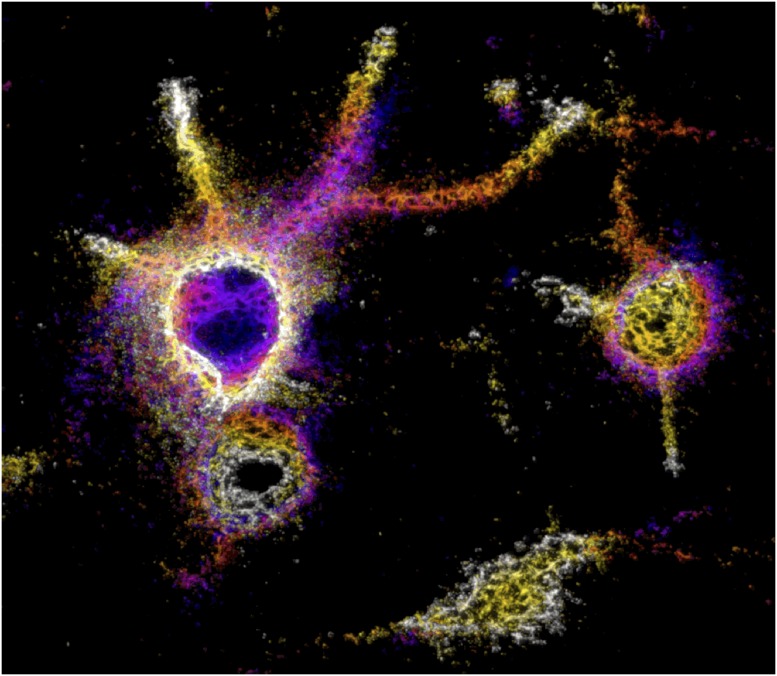Monday, 19 August 2024
Discovery of the “jailer” in our neurons
Today I’d like to say a few words about a phenomenon that is related to neuronal plasticity and that I’d never heard of before. I learned about it in a book entitled Seeing the Mind: Spectacular Images from Neuroscience, and What They Reveal about Our Neuronal Selves, by French cognitive psychologist Stanislas Dehaene. Actually, I read the original French edition, published in 2021, but I don’t have access to the English edition, published in 2023, so the following excerpt is my own translation:
As we age, certain neurons, and especially the large inhibitory neurons that control the activity of their surroundings, become wrapped in a perineuronal net,a rigid lattice that holds them still. This aggregate of proteins and sugar chains, which has some of the same ingredients as cartilage, prevents the nerve cells from changing. Hence they cannot form new connections or even alter existing ones; emprisoned in this net, the neuron loses its plasticity.
Dehaene goes on to explain that this phenomenon may contribute to ending the critical periods of great neural plasticity that occur in early childhood, during which children can accomplish certain complex forms of learning, such as language learning, effectively, but after which such learning becomes very difficult. Dehaene also points out that in the human brain neural plasticity never ends completely; it continues throghout adulthood, thanks to many mechanisms that cause the effectiveness of the brain’s neural connections to vary.
I’ll leave you with this passage from an article that was published on this subject in 2018 and that opens some new perspectives on it:
Emerging evidence suggests that perineuronal nets, even once established, are sensitive to changes, such as stress, immune responses, and even learning itself. “There’s a relatively new idea that perineuronal nets are a very dynamic structure,” says Prochiantz. “They assemble and disassemble, and you have to keep this equilibrium between assembly and disassembly.” The molecular details of how perineuronal nets behave could help researchers understand how these structures participate in various brain disorders and how they might be manipulated to create new treatments.
From the Simple to the Complex | Comments Closed









